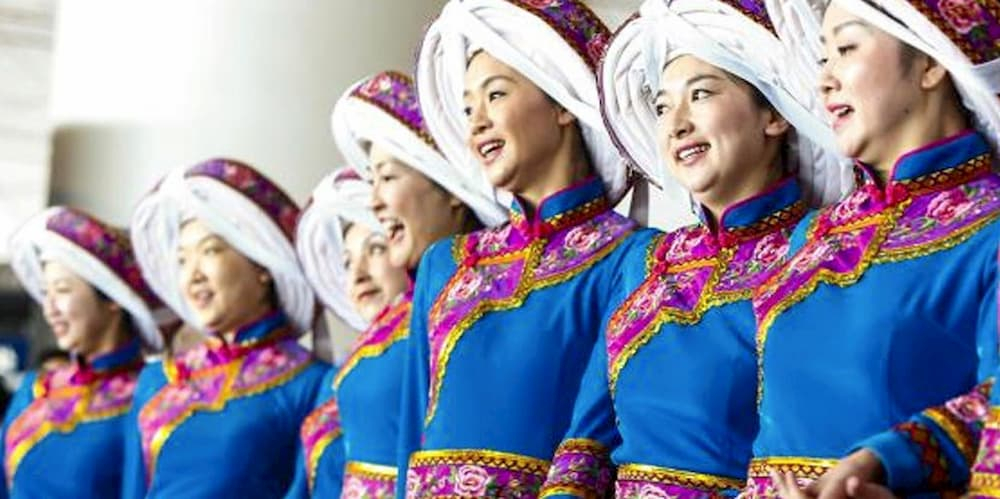
Chinese Dialects
Splendid
Chi Culture
Topic
Chinese Dialects
According to UNESCO statistics, there are more than 6,000 languages in the world. The ten most commonly used ones are Chinese, Spanish, English, Arabic, Hindi, Bengali, Portuguese, Russian, Japanese, and German.
Chinese linguists have found approximately 200 varieties in the Chinese language, and classified them into groups of common languages and dialects. The most common language spoken in China today, Hanyu (language of the Han people), is based on northern Chinese dialects that developed through several stages over many centuries; evolving from yayu (correct and elegant speech) in the pre-Qin period ( times before 221 BCE) and tongyu (general language) in the Han dynasty (206 BCE–220 CE), to guanhua (speech of officials) in the Song (960–1279) and Ming (1368–1644) dynasties before coalescing into guoyu (national language), and putonghua (common language, or Mandarin) in the late Qing period (mid-nineteenth century–early twentieth century).
Dialects refer to the varieties or forms of a common language spoken in a particular geographical region or by a particular people. The ten major dialects of Chinese are Mandarin (Beijing dialect), Jin (Shanxi), Hui (Huizhou), Xiang (Hunan), Min (Fujian/Taiwanese Hokkien), Gan (Jiangxi), Wu (Shanghai), Kejia (Hakka), Yue (Canton), and Ping (Guangxi). As several of these ten dialects are spoken over large geographical areas and in contiguous provinces, smaller units of sub dialects have resulted. The Min dialect alone can be divided into southern, northern, eastern, central, Pu-Xian, and other varieties. Among these, the southern variety can be further subdivided into varieties currently spoken in Quanzhou, Zhangzhou, Xiamen, and contiguous areas. This shows the complexity of Chinese dialects.
The forms of Chinese mutually unintelligible dialects underwent a long period of development. The existence of dialect was already noted in ancient Chinese texts. The “Wang zhi” (Royal regulations) section of the Li ji (Record of rites), notes that “…People of different regions do not share a common language and each has their own tastes and desires…”
In the third and fourth centuries, northern and southern Chinese dialects were not only different but also varied distinctively within the same geographical region. The northern dialects evolved into Mandarin or putonghua, the common language of China today, while the Wu, Yue, and Xiang dialects gradually formed in south and southeastern China as common dialects. During the Wei (220–265), Jin (265–420), and the Southern and Northern Dynasties (420–589) periods, northern nomadic peoples took control of the Central Plain and the former Han Chinese ruling elite were driven south of the Yangtze River, along with large populations of their northern subjects. The integration of northern and southern Chinese language groups gave rise to the Kejia, Min, and Gan dialects. Linguists believe that the overall dialect pattern of modern Chinese (from about the tenth century onwards) was largely shaped during the period of Middle Chinese (up to 907).
Chinese dialects are characterized by “having variations among common elements” and “having common elements among variations.” Vernaculars spoken in provinces south and southeast of the Yangtze River, such as in Jiangsu, Zhejiang, Hunan, Jiangxi, Anhui, Fujian, Guangdong, and Guangxi, bear significantly more differences than commonalities; while dialects in the vast territory north of the Yangtze River, especially the north and northeastern regions of China, demonstrate more commonality than diversity.
Language development was accompanied by the simplification of its phonetic system. Mandarin or putonghua has a relatively simple phonetic system, while southern dialects retain some phonetic features of ancient Chinese. Mandarin usually features four tones, five in rare cases, in contrast to the Min dialect which still has seven to eight tones or the Yue dialect which retains eight to ten tones. The number of tones used in a dialect is usually indicative of its phonological complexity.
In addition to differences in phonology, Chinese dialects also vary somewhat in word meaning, grammar, word usage, word order, syntax, and other related aspects.
The classification of Chinese dialects has been conducted by a number of linguists, including Zhang Taiyan (1869–1936), Zhao Yuanren (1892–1982), Ding Shengshu (1909–1989), Li Rong (1920–2002), Li Jinxi (1890–1978), and Wang Li (1900–1986). The Chinese Academy of Social Sciences and the Australian Academy of the Humanities collaborated from 1987 to 1990 on the compilation of the Language Atlas of China, which identifies the ten major Chinese dialect regions as Mandarin, Jin, Wu, Hui, Gan, Xiang, Min, Yue, Ping, and Kejia.



